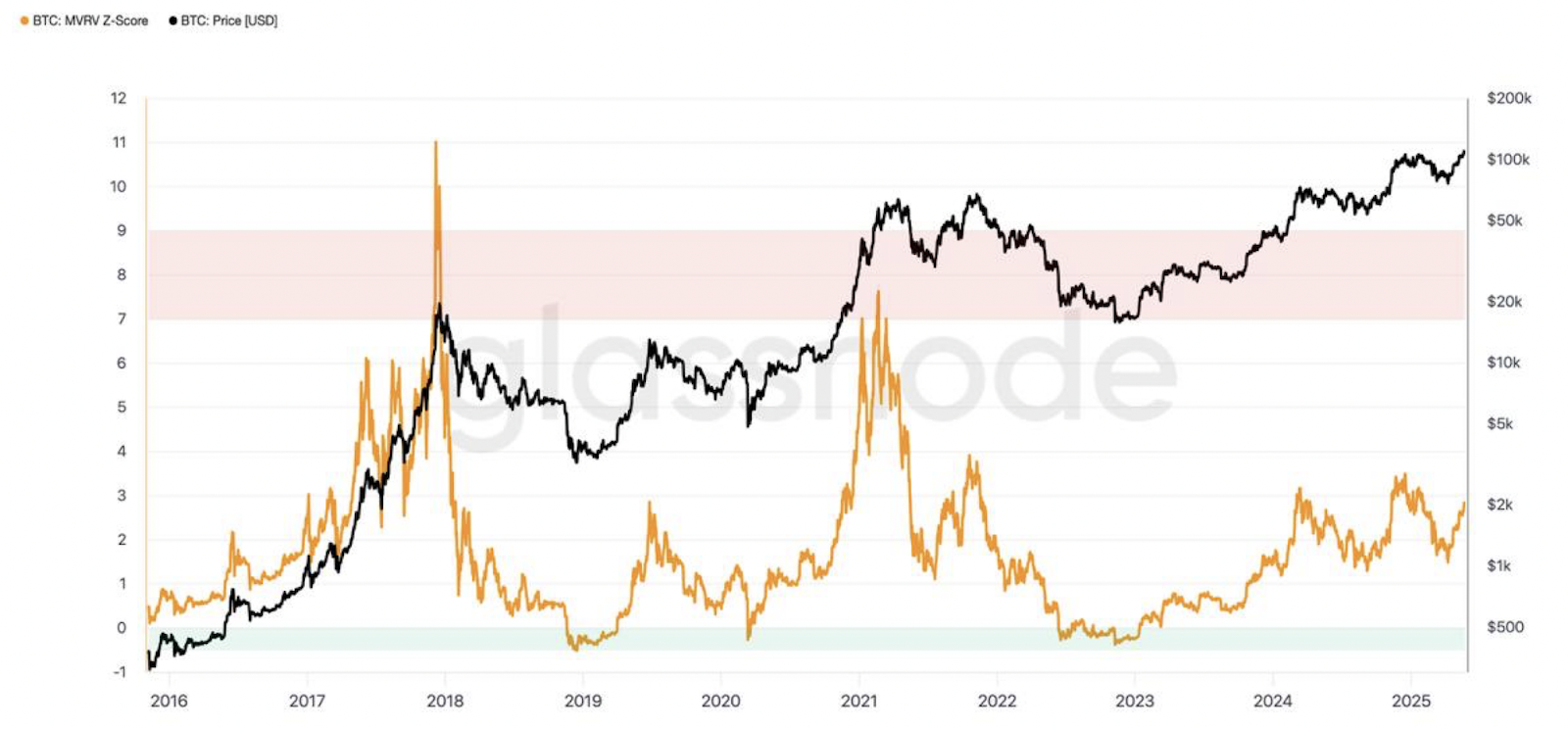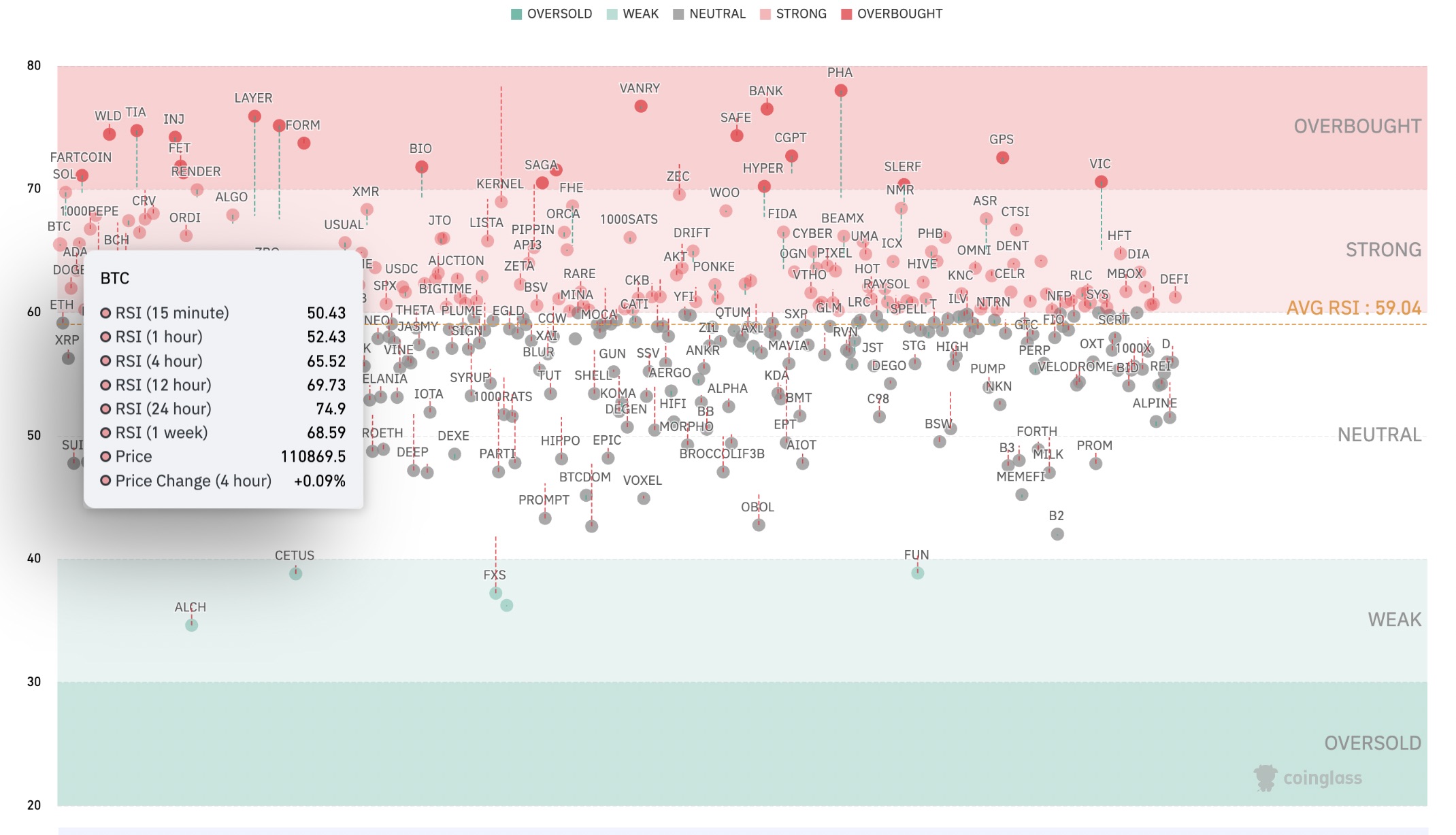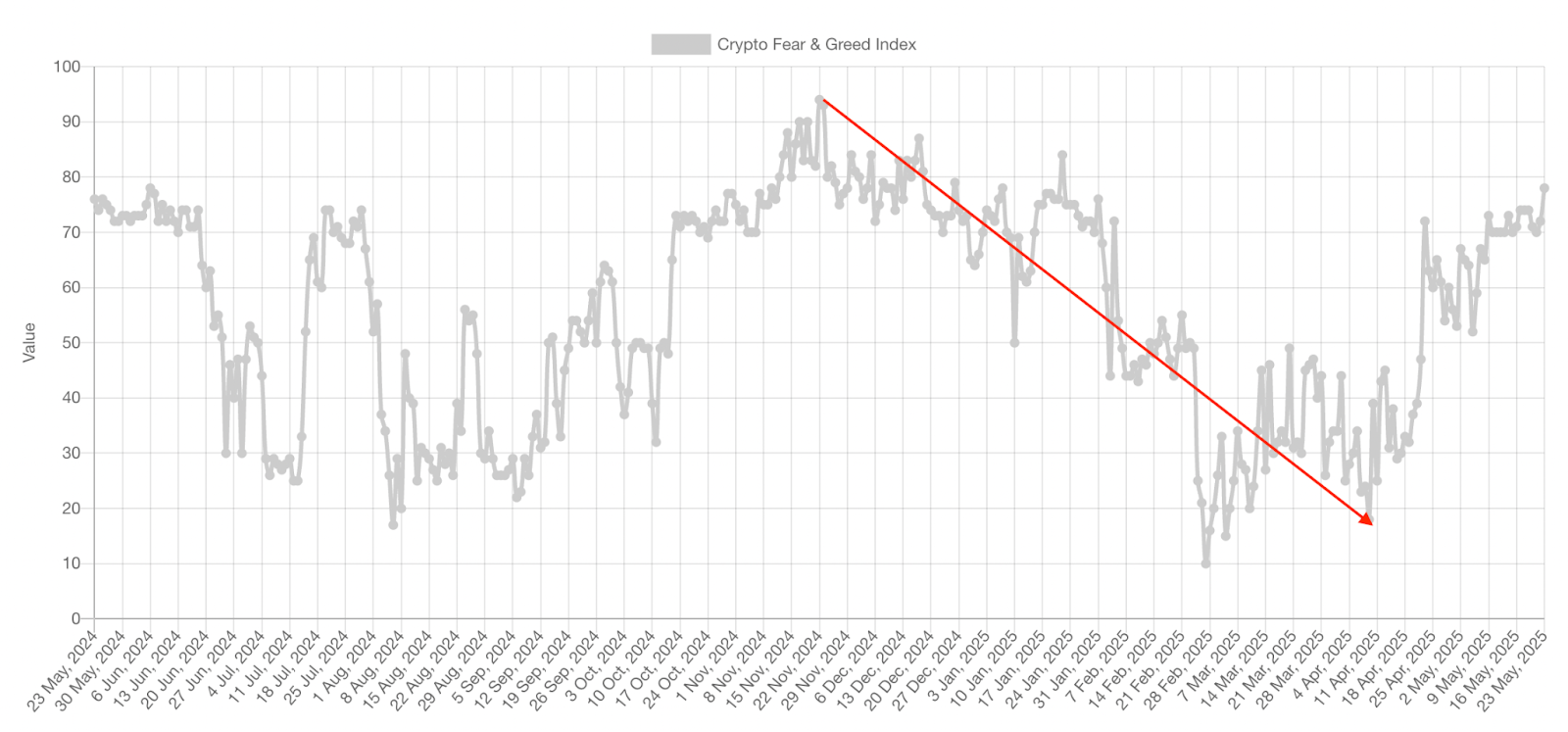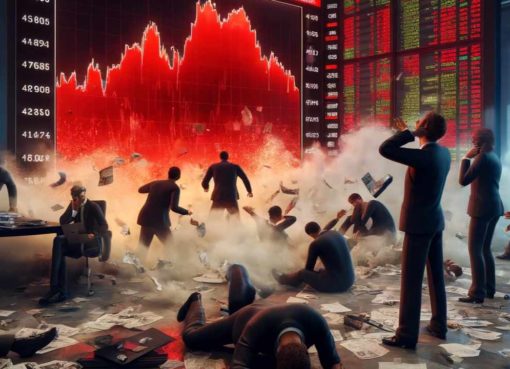Key takeaways:
-
Bitcoin hit a new all-time high of $111,970 on May 22, but retraced to $110,700, with analysts noting mixed signals on market overheating.
-
Funding rates and other metrics suggest a “healthy upward phase.”
Bitcoin’s (BTC) price recorded a new all-time high of $111,970 on May 22. However, BTC price retraced shortly after to trade at $110,700 at the time of writing.
Despite the correction, there are mixed signals about whether the price rally is overheated or whether this is a healthy pullback.
Bitcoin “still not overheated” — analyst
Bitcoin is not showing any signs of being overheated despite reaching new all-time highs this week, with several analysts pointing to fundamentals suggesting Bitcoin could rise further.
“Overheating indicators such as the funding rate and short-term capital inflow remain low compared to previous peaks, and profit-taking by short-term investors is limited,” said CryptoQuant analyst Crypto Dan in a May 22 Quicktake note.
Crypto Dan pointed out that Bitcoin’s funding rate, an indicator of market overheating, shows an increase in long bets. However, these bets “remain much smaller compared to previous peaks,” suggesting “futures market overheating is negligible.”
A spike in Bitcoin funding rates can sometimes cause worry among market participants about increased Bitcoin volatility and liquidation risks.
Still, the funding rates are moderately positive, signaling that traders are optimistic about Bitcoin’s price and buyers are willing to pay sellers a fee to hold their positions.
Meanwhile, the short-term holder (STH) Spent Output Profit Ratio (SOPR) metric reveals that despite STHs returning to profit, few have taken profits during the recent rise.
This indicator is currently valued at 1.02%, suggesting that STHs are realizing some profits at much lower rates.
“In March 2024, there was significant profit-taking and a prolonged correction, but currently, profit-taking is much lower than in November 2024,” the analyst explained, adding that despite the price at all-time highs, whales’ profit-taking activity remains relatively subdued.
CryptoQuant’s Crypto Dan expected Bitcoin to continue rising higher, noting:
“Overall, the Bitcoin market is still in a healthy upward phase.”
Meanwhile, Bitcoin’s MVRV Z-score value — a metric that compares BTC’s market value to its realized value and adjusts for volatility — has seen a notable surge over the last month.
Historically, all previous Bitcoin bull runs started with a notable surge in MVRV Z-score and ended with the metric entering the red zone (see chart below) to signal that Bitcoin is significantly overvalued.
At 2.8, the MVRV Z-score is still significantly below the red zone, suggesting that the market top is not yet in.

Bitcoin’s RSI entering “exhaustion”
Bitcoin’s relative strength index, or RSI, displays overbought conditions in two out of five timeframes. Bitcoin’s RSI is now at 70 in the 12-hour timeframe and 75 on the daily chart. Other intervals show near-oversold RSI values on the weekly and four-hour timeframes.

Data from TradingView shows BTC’s RSI at 75, 71, 68 and 66 on daily, 12-hour, weekly and four-hour timeframes, respectively. Meanwhile, the Crypto Fear & Greed Index is 78, indicating “extreme greed” conditions.

When investors get too “greedy,” the market is often overdue for a correction. The last time this index was at similar levels was at the height of the Trump-driven pump in December 2024, just before BTC dropped down from its then-all-time high of around $108,000 and tumbled toward $74,000 in March.
Related: Bitcoin buyer dominance at $111K suggests ‘another wave’ of gains
Even though these metrics are cautioning market participants to manage risks, it is important to note that RSI conditions do not guarantee a trend reversal. Crypto prices are highly volatile, and BTC could continue to rally, fueled by increasing spot ETF demand and easing trade war tensions.
This article does not contain investment advice or recommendations. Every investment and trading move involves risk, and readers should conduct their own research when making a decision.




